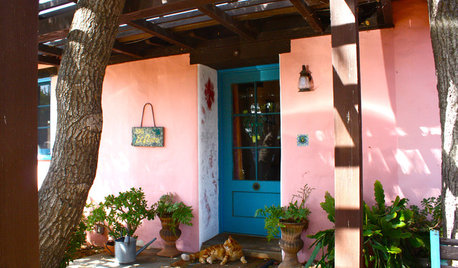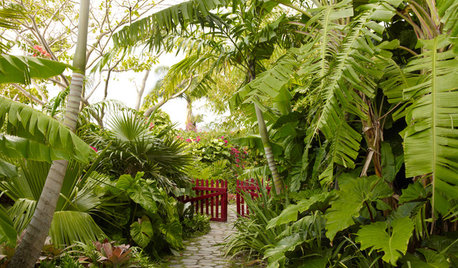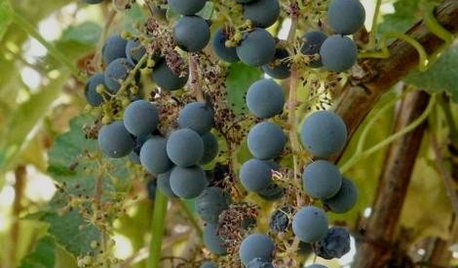Wild American Plum Trees
jennifergibbons
17 years ago
Related Stories

FRUIT TREESHow to Grow Your Own Juicy Plums
Easier than other stone fruits and with a variety of colors to choose from, plums are a versatile garden addition
Full Story
EXTERIOR COLOR18 Home Exteriors Gone Wild With Color
Technicolor dreams play out beautifully with these exterior paint jobs, showing that color confidence has its rewards
Full Story
NATIVE PLANTSGreat Design Plant: Wild Bergamot, Friend of Foragers
Nourish butterflies and other winged creatures with the tubular flowers of Monarda fistulosa, a pretty pink native
Full Story
LANDSCAPE DESIGNWild Gardens Bring Excitement and Beauty to Landscapes
Forget what’s expected and ‘fashionable.’ Bold gardens teeming with site-appropriate plants make for a richer experience
Full Story
GARDENING GUIDESBackyard Birds: How to Care for American Goldfinches
The American goldfinch is a bright-in-the-summer visitor and one of the only vegetarian songbirds. Here's how to give them a healthy habitat
Full Story
LANDSCAPE DESIGNLiving on the Edge of the Wild
When Mother Nature is your neighbor, the possibilities — and responsibilities — can be that much greater
Full Story
GARDENING FOR BIRDSWild Birds Transform a Woman’s Garden and Life
How Sharon Sorenson created a wildlife haven and became the Bird Lady of Southern Indiana
Full Story
FUN HOUZZ31 True Tales of Remodeling Gone Wild
Drugs, sex, excess — the home design industry is rife with stories that will blow your mind, or at least leave you scratching your head
Full Story
GROUND COVERSGive Your Lawn a Taste of the Wild
Consider the joys of an irregularly trimmed meadow lawn: It’s ecofriendly, visually interesting and still good for romping
Full Story
GARDENING GUIDESGreat Design Plant: Try California Wild Grape for Interest All Year
Sure, it’s stunning in fall. But the spring buds, summer grapes and gnarled winter vines are gorgeous too
Full Story





marknmt
Joeray
Related Professionals
Baltimore Landscape Architects & Landscape Designers · Erie Landscape Architects & Landscape Designers · New Mexico Landscape Architects & Landscape Designers · Saint Charles Landscape Architects & Landscape Designers · Salem Landscape Architects & Landscape Designers · Aurora Landscape Contractors · Wakefield Landscape Contractors · Maple Valley Landscape Contractors · Canton Landscape Contractors · Davis Landscape Contractors · Longmont Landscape Contractors · Louisville Landscape Contractors · Panama City Beach Landscape Contractors · St. Louis Landscape Contractors · Vadnais Heights Landscape ContractorsjennifergibbonsOriginal Author
lucky_p
lucky_p
marknmt
marknmt
newplanter_2009
bamabutterfly
william6
DBEAST
jolj
OMcGehee
Rick Liebenthal